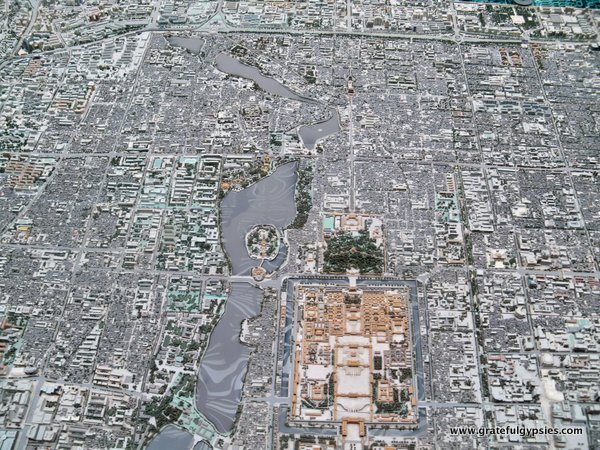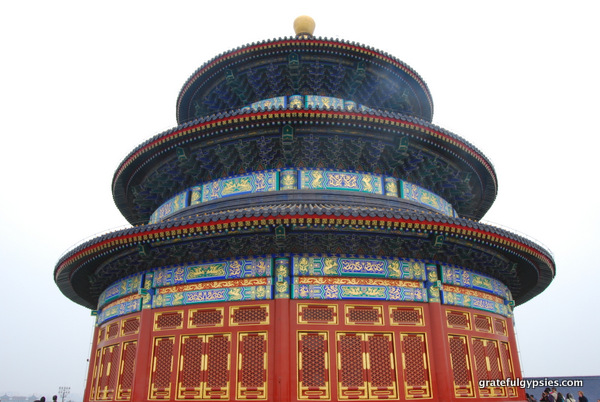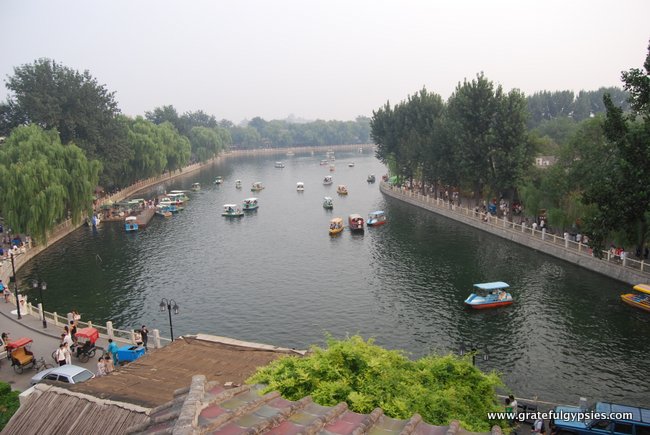Exploring the Central Axis of Beijing Posted by sasha on Aug 15, 2018 in Culture
We all know that Beijing has a long history going back thousands of years, but just how did they design this city? Perhaps the most important element in the layout and design of Beijing is the city’s Central Axis (中轴线 – zhōng zhóu xiàn). Most of the essential buildings in the city were constructed along this 7.8 km axis. In this post we’ll learn a bit about the Central Axis and see which famous landmarks can be found there.
A Brief History
Construction of the old city of Beijing began during the Yuan Dynasty. It expanded greatly during the subsequent Ming and Qing Dynasties. According to UNESCO, the Central Axis “demonstrates the ingenious urban planning in the Yuan, Ming and Qing dynasties, as well as the People’s Republic of China.”
Traditional Chinese culture places great value on the center, and it’s believed that this north-south axis coincides with Earth’s meridian. The emperors of ancient China truly believed they were at the center of the world, so they had their palaces, temples, and more built on this Central Axis. In ancient times, it was referred to as the “dragon’s vein.”
Landmarks Along the Central Axis
If you’re visiting Beijing, you can cross off most of the landmarks in the city by simply traveling along the Central Axis from south to north. Here’s a quick guide to the many sights along the way, with links to more detailed posts where possible and a few of my videos as well.
Yongdingmen and Temple of Heaven
Once upon a time, Yongdingmen ( 永定门 – yǒng dìng mén) was the front gate of the outer city on Beijing’s old City Wall. It was originally built back in 1553, but was then torn down during the 1950s to make way for new roads. Perhaps realizing the error in tearing down important historical buildings, the government rebuilt the gate in 2005.
While it’s not technically on the Central Axis, the Temple of Heaven (天坛 – tiān tán) is close enough. Plus, you’ll probably want to visit it anyways, and this is the perfect opportunity. The emperor would come here twice a year – always on the winter solstice – to pray for bumper crops and a good harvest. See what it looks like in this short video:
Zhengyangmen
Moving north, you’ll find yourself at the Zhengyangmen Archery Tower (正阳门箭楼 – zhèng yáng mén jiàn lóu). In front of this historic gate is Qianmen Street (前门大街 – qián mén dà jiē). This pedestrian street has been a center of commercial activity for hundreds of years. Unfortunately, it has developed a bit too much and is now home to mostly luxury international brands. Thankfully, you can still find a bit of old Beijing by wandering around the meandering hutong that jut out from this main road.
Before too long, you’ll arrive at Zhengyangmen (正阳门 – zhèng yáng mén) – the “Gate of the Zenith Sun.” Built in 1419, this gate once guarded the southern entrance to the Inner City. This is the gate the emperor would pass through on his way to make offerings at the Temple of Heaven. These days, it’s more commonly referred to as Qianmen (前门 – qián mén) – the “Front Gate.”
Tiananmen Square
Next on our journey is the heart of modern China – Tiananmen Square (天安门广场 – tiān’ān mén guǎng chǎng). It was originally built back in 1651 and was just meant to be a place the emperor was carried across. This is where Mao Zedong proclaimed the founding of the People’s Republic of China on October 1, 1949. Mao had grand plans for the square, and it was expanded to four times its original size in 1958. Take a short video tour of Tiananmen Square and see what it looks like:
Forbidden City
Across the street from the square, you’ll find the actual Tiananmen (天安门 – tiān’ān mén) – the “Gate of Heavenly Peace.” This is the main entrance into the Imperial Palace (故宫 – gù gōng), which is more commonly referred to as the Forbidden City (紫禁城 – zǐ jìn chéng). Once home to the emperors of the Ming and Qing Dynasties, it served as the political center of China for just under 500 years. It’s no longer forbidden, and this UNESCO World Heritage Site receives around 15 million visitors a year. Check it out in this short video I put together:
Jingshan Park
Once you make your way out the north side of the Forbidden City, you can cross the street and head to Jingshan Park (景山公园 – jǐng shān gōng yuán). This former imperial garden is highlighted by the “Prospect Hill” at its center. It was built during the Ming Dynasty with the soil that was excavated to form the moats of the Forbidden City and other canals in the city. Speaking of the Ming Dynasty, the last emperor hung himself from a tree in this very park after Beijing fell to rebel forces. On a clear day, it’s hard to beat the views from up here.
Beijing’s Lakes
Once again, it’s worth it to step slightly off the Central Axis to visit a few more points of interest. Right next to Jingshan, you’ll find scenic Beihai Park (北海公园 – běi hǎi gōng yuán). This is one of the largest Chinese gardens, covering about 170 acres. It’s also one of the oldest, as it was created way back in 1150. As with many imperial gardens in China, much of its design was based on other scenic areas around the country.
Cross the street heading north, and you’ll find yourself at Shichahai (什刹海 – shí chà hǎi). This scenic area is composed of three more lakes – Qianhai (前海 – qián hǎi), Houhai (后海 – hòu hǎi), and Xihai (西海 – xī hǎi). These are the Front Lake, Back Lake, and West Lake, respectively. This is a fascinating and fun part of Beijing to explore, as there’s lots to see, do, eat, and drink. Enjoy a short video tour of the lakes and be sure to check them out on your visit:
Drum and Bell Towers
The final stop on our trip along Beijing’s Central Axis are the Drum Tower (鼓楼 – gǔlóu) and Bell Tower (钟楼 – zhōng lóu). Back in the day, these dueling towers dominated the skyline of old Beijing. They were originally used as actual musical instruments and were later official time-telling devices for the city.
These days, you can buy a ticket and head up to the top of both towers to enjoy the panoramic view of the city. There are also several performances throughout the day in the Drum Tower. It’s worth it to try and check one out if you’re heading up there anyways.
Once you’re done visiting the towers, you can celebrate completing your trip along the famed Central Axis of Beijing. This part of the city – known as Gulou after the Drum Tower – is one of the hippest neighborhoods in Beijing. You’ll find plenty of restaurants, bars, and music venues here that can make for a great night out.

Build vocabulary, practice pronunciation, and more with Transparent Language Online. Available anytime, anywhere, on any device.














Leave a comment: